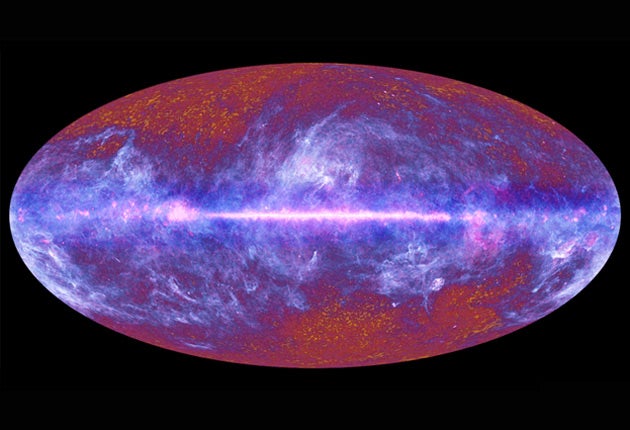Space telescope captures images of Big Bang's 'afterglow'

Your support helps us to tell the story
From reproductive rights to climate change to Big Tech, The Independent is on the ground when the story is developing. Whether it's investigating the financials of Elon Musk's pro-Trump PAC or producing our latest documentary, 'The A Word', which shines a light on the American women fighting for reproductive rights, we know how important it is to parse out the facts from the messaging.
At such a critical moment in US history, we need reporters on the ground. Your donation allows us to keep sending journalists to speak to both sides of the story.
The Independent is trusted by Americans across the entire political spectrum. And unlike many other quality news outlets, we choose not to lock Americans out of our reporting and analysis with paywalls. We believe quality journalism should be available to everyone, paid for by those who can afford it.
Your support makes all the difference.A striking image showing the ghost of the Big Bang has been captured by a new space telescope.
The Planck satellite was launched by the European Space Agency in May 2009 to study the early universe.
It is designed to scan the sky with instruments sensitive to nine different bands of normally invisible microwave light.
Picking up cosmic microwaves makes it possible to see the "afterglow" of radiation produced by the Big Bang that gave birth to the universe around 14 billion years ago.
Known as the Cosmic Microwave Background (CMB), it contains information that can help scientists piece together what happened when the universe began.
The Planck image shows the main disc of the Milky Way galaxy, the Sun's starry "home", with the yellow-mottled CMB above and below it.
The radiation was released as the first atoms were forming, just 400,000 years after the Big Bang brought matter, space and time into existence.
Dr David Parker, director of space science and exploration at the UK Space Agency, said: "Planck has 'painted' us its first spectacular picture of the universe. This single image captures both our own cosmic backyard - the Milky Way galaxy that we live in - but also the subtle imprint of the Big Bang from which the whole universe emerged."
The image shows dust strewn throughout the galaxy in blue, with a red band across the centre showing hot regions.
Variations in the CMB backdrop represent minute differences in the temperature and density of matter when the galaxies had not yet formed.
Over time, these small irregularities evolved into denser regions that eventually became the galaxies of today.
Several UK institutions have been involved in the design, construction and operation of the Planck satellite.
Professor Peter Ade, from the University of Cardiff, one of the team in charge of Planck's High Frequency Instrument, said: "At last we can see the realisation of the full potential of Planck, showing in exquisite detail our own Milky Way galaxy superimposed on the relic fireball background. It is a fantastic result for this unique satellite, and demonstrates once again that you can only do pioneering science by using advanced and therefore high risk technologies."
Dr David Clements, another Planck scientist from Imperial College London, said: "Just looking at the pictures you can tell we're seeing new things about the structure of our galaxy. Once we've done that, and stripped away these foregrounds, then it's on to the Cosmic Microwave Background and the glow of the Big Bang itself."
The big question scientists want to answer is whether the CMB can reveal the cosmic signature of inflation, an incredibly fast expansion of the universe that it supposed to have occurred just after the Big Bang.
Inflation is the cornerstone of current theories about the formation of the universe.
Join our commenting forum
Join thought-provoking conversations, follow other Independent readers and see their replies
Comments